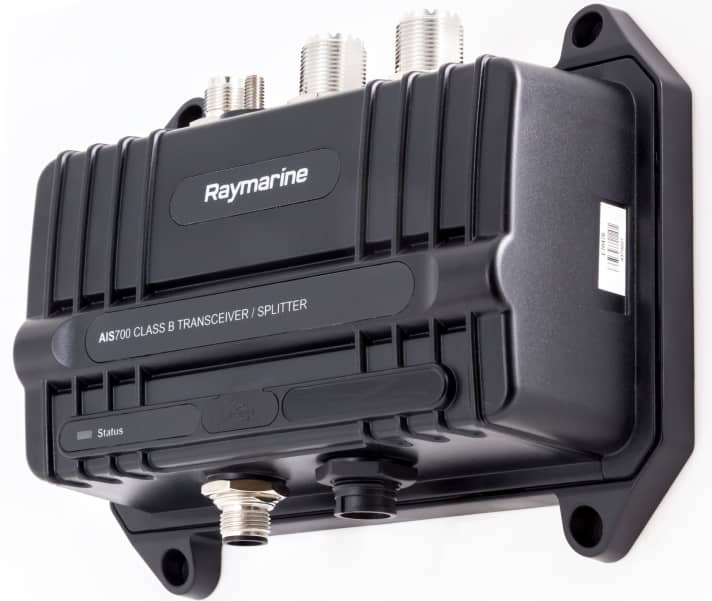
The AIS700 class B transceiver scores with a whole range of functions. Thanks to the integrated 72-channel GPS receiver and an antenna splitter, it can be retrofitted without much effort. All you need to do is loop the black box between the VHF radio and the existing aerial. Data is exchanged with the plotter via NMEA2000 and SeaTalkng protocol. As the AIS700 is equipped with an NMEA multiplexer, it can also be operated in older instrument systems with the NMEA0183 standard.

Safely on air
The transmission power of the AIS700 is said to be 5 watts and it works with the SOTDMA scheme previously reserved for Class A devices. Some background: The AIS automatic identification system distinguishes between devices for commercial shipping (Class A) and cheaper transmitters for pleasure craft. These Class B devices have a lower transmission power, and the procedures also differ depending on whether the ether is currently clear or another vessel is already transmitting data.
The professional devices listen to the radio traffic and coordinate with the other AIS devices to reserve transmission times, known as time slots, for their own data transmission. This scheme is called SOTDMA (Self Organising Time Division Multiple Access). This ensures that all participants have regular access.
Class B transmitters, on the other hand, are, roughly speaking, only allowed to listen until there is radio silence, but cannot actively reserve transmission times. In very busy sea areas, it is therefore theoretically possible that they will have to wait a while before they can transmit. This risk does not exist with the AIS700, which works according to the SOTDMA scheme. However, given the relatively low speeds of sailing yachts, even position data that is a few minutes old is not a real safety disadvantage.
The other usual restrictions for Class B - for example, that they can be suppressed by area control centres and blanked out by Class A receivers - also apply to devices operating according to SOTDMA.
The Raymarine AIS700 transceiver should cost 1066 euros
Further information can be found at www.raymarine.com
